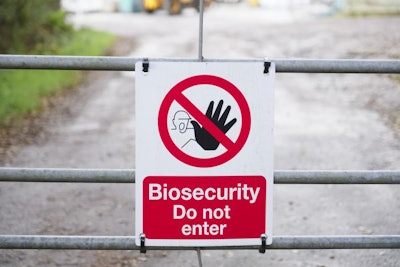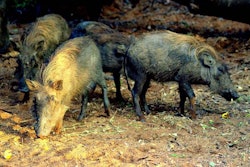
Experts from Kansas State University and the Swine Health Information Center reveal the keys to a successful feed biosecurity program
A successful feed biosecurity program is made up of multiple layers of risk reduction techniques.
Speaking during the webinar, “Keys to a Successful Feed Biosecurity Program,” sponsored by Kemin and presented by Feed Strategy and WATT Global Media on June 30, Dr. Jordon Gebhardt of Kansas State University and Dr. Paul Sundberg of the Swine Health Information Center, said there is not just one key to biosecurity, but many things that work together to create a biosecurity program.
“It’s important not to just think about these as a single approach,” Gebhardt said. “We need to think about the big picture of feed biosecurity and understand that all of these measures are additive in nature and all help reduce risk, and that’s the goal: Doing things in combination that have the biggest impact on risk reduction.”
Gebhardt and Sundberg spoke about lessons learned while studying African swine fever (ASF) in Asia, including how and where the virus can contaminate surfaces.
In PCR tests of feed trucks, the majority of positive tests came from inside the truck cabs, rather than outside surfaces.
“This was very eye opening to us and really allowed us to think about this a little bit differently and re-evaluate the biosecurity program of this system,” Gebhardt said. What this data reveals is that “they’re doing a really good job with exterior surfaces of feed trucks. They remove organic material, they dry and apply disinfectant to the exterior surfaces. However, the inside cabs are a lot more difficult to control.”
In PCR tests conducted on surfaces inside the feed mill, the one positive test came from the driver resting area, where drivers tend to congregate.
“This emphasizes the importance of people in thinking about feed biosecurity and what are people in feed trucks doing to spread this virus around,” Gebhardt said. “Within the feed mill, we need to control points of access.”
To improve feed biosecurity, he said feed producers should use the biosecurity practices that have been implemented on-farm for years and incorporate them into the feed mill. These practices include the use of clean/dirty lines, Danish-style entryways and lines of separation.
Point of contamination
Every step along the feed production line can affect the likelihood of contamination, including packaging, storage, transportation and delivery.
“One of the very important steps is understanding where our ingredients and raw materials are coming from,” Gebhardt said. “We need to ensure that they’re manufactured, stored and delivered in a way that’s very biosecure. This is the fundamental and very important first step in reducing the chance that, ultimately, our feed will be contaminated with a pathogen.”
Sundberg said the entire industry must work together to practice good biosecurity.
“There’s a variety of different ways that the virus could enter, there’s a variety of different ways it may move … and we consider the feed component very well may be one of those,” he said. “It’s really an industry responsibility and that’s why we all have to work together.”
He agreed that multiple biosecurity measures should be implemented to be most effective.
“Any one of these biosecurity steps is not in itself going to be 100% effective. In biosecurity, you keep layering biosecurity steps onto each other,” he said. “We layer biosecurity issues on top of each other because each hurdle lessens the opportunity for that pathogen to get over.”
Missed the webinar or want to watch it again? View it on demand.
















